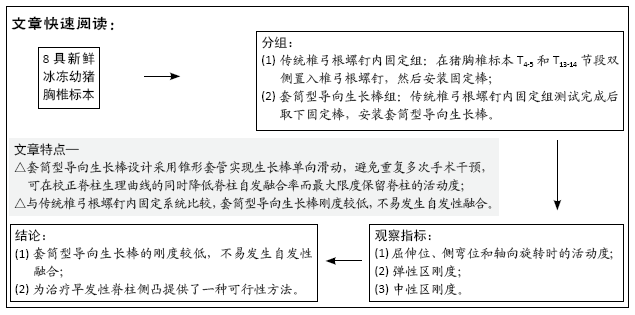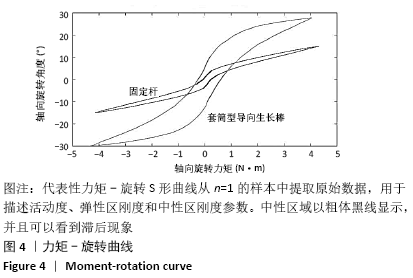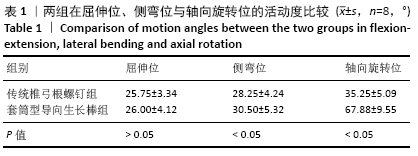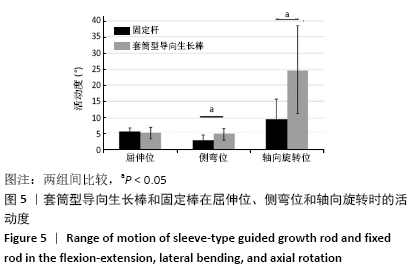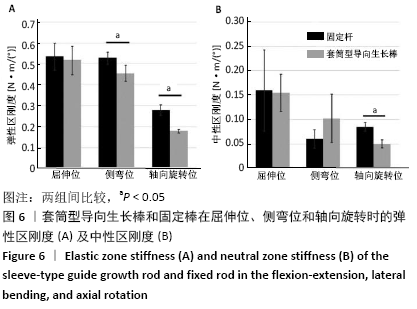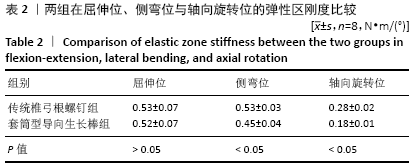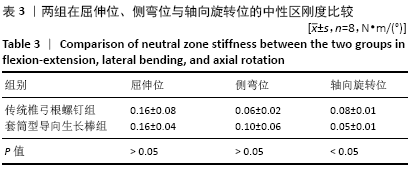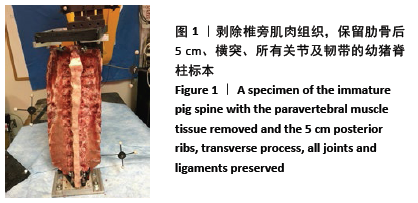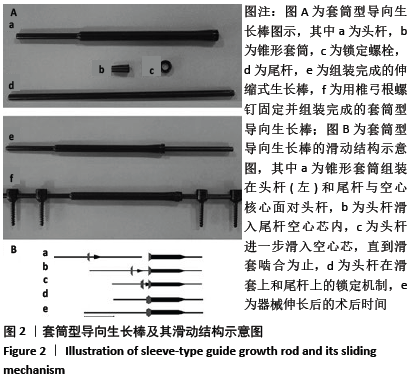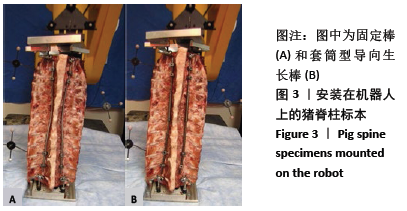[1] THOMETZ J, LIU XC. Serial CAD/CAM bracing: an alternative to serial casting for early onset scoliosis. J Pediatr Orthop. 2019;39:e185-e189.
[2] MARUYAMA T, KOBAYASHI Y, MIURA M, et al. Effectiveness of brace treatment for adolescent idiopathic scoliosis. Scoliosis. 2015;10:S12.
[3] MCMASTER MJ, MACNICOL MF. The management of progressive infantile idiopathic scoliosis. J Bone Joint Surg Br. 1979;61:36-42.
[4] THOMPSON RM, HUBBARD EW, JO CH, et al. Brace Success Is Related to Curve Type in Patients with Adolescent Idiopathic Scoliosis. J Bone Joint Surg Am. 2017;99:923-928.
[5] FEDORAK GT, STASIKELIS PJ, CARPENTER AM, et al. Optimization of casting in early-onset scoliosis. J Pediatr Orthop. 2019;39:e303-e307.
[6] CANAVESE F, SAMBA A, DIMEGLIO A, et al. Serial elongation-derotation-flexion casting for children with early-onset scoliosis. World J Orthop. 2015;6:935-943.
[7] CAMPBELL RM JR, SMITH MD, MAYES TC, et al. The effect of opening wedge thoracostomy on thoracic insufficiency syndrome associated with fused ribs and congenital scoliosis. J Bone Joint Surg Am. 2004;86: 1659-1674.
[8] HARDESTY CK, HUANG RP, EL-HAWARY R, et al. Early-onset scoliosis: updated treatment techniques and results. Spine Deform. 2018;6: 467-472.
[9] LIANG J, LI S, XU D, et al. Risk factors for predicting complications associated with growing rod surgery for early-onset scoliosis. Clin Neurol Neurosurg. 2015;136:15-19.
[10] SUN ZJ, QIU GX, ZHAO Y, et al. Dual growing rod treatment in early onset scoliosis: the effect of repeated lengthening surgeries on thoracic growth and dimensions. Eur Spine J. 2015;24:1434-1440.
[11] BESS S, AKBARNIA BA, THOMPSON GH, et al. Complications of growing-rod treatment for early-onset scoliosis: analysis of one hundred and forty patients. J Bone Joint Surg Am. 2010;92:2533-2543.
[12] AKGÜL T, DIKICI F, ŞAR C, et al. Growing rod instrumentation in the treatment of early onset scoliosis. Acta Orthop Belg. 2014,80:457-463.
[13] WILKINSON JT, SONGY CE, BUMPASS DB, et al. Curve modulation and apex migration using shilla growth guidance rods for early-onset scoliosis at 5-year follow-up. J Pediatr Orthop. 2017;37:e567-e574.
[14] LA ROSA G, OGGIANO L, RUZZINI L. Magnetically controlled growing rods for the management of early-onset scoliosis: a preliminary report. J Pediatr Orthop. 2017;37:79-85.
[15] CALDAS JC, PAIS-RIBEIRO JL, CARNEIRO SR. General anesthesia, surgery and hospitalization in children and their effects upon cognitive, academic, emotional and sociobehavioral development - a review. Paediatr Anaesth. 2004;14:910-915.
[16] SANKAR WN, ACEVEDO DC, SKAGGS DL. Comparison of complications among growing spinal implants. Spine (Phila Pa 1976). 2010;35: 2091-2096.
[17] KWAN K, ALANAY A, YAZICI M, et al. Unplanned Reoperations in Magnetically Controlled Growing Rod Surgery for Early Onset Scoliosis With a Minimum of Two-Year Follow-Up. Spine (Phila Pa 1976). 2017; 42:E1410-E1414.
[18] LUQUE ER. Paralytic scoliosis in growing children. Clin Orthop Relat Res. 1982:202-209.
[19] KESKINEN H, HELENIUS I, NNADI C, et al. Preliminary comparison of primary and conversion surgery with magnetically controlled growing rods in children with early onset scoliosis. Eur Spine J. 2016;25: 3294-3300.
[20] 邓海洋,邓海洋,吴双,等. 套筒型导向生长棒对幼猪脊柱生长影响的实验研究[J]. 中华骨科杂志,2018,38(6):361-369.
[21] 何斌,胡侦明,郝杰,等.后部不同结构切除对胸椎稳定性的影响[J]. 第三军医大学学报,2012,34(20):2101-2104.
[22] BELL KM, HARTMAN RA, GILBERTSON LG, et al. In vitro spine testing using a robot-based testing system: comparison of displacement control and “hybrid control”. J Biomech. 2013;46:1663-1669.
[23] THAWRANI DP, GLOS DL, COOMBS MT, et al. Transverse process hooks at upper instrumented vertebra provide more gradual motion transition than pedicle screws. Spine (Phila Pa 1976). 2014;39:E826-832.
[24] QUICK ME, GRANT CA, ADAM CJ, et al. A biomechanical investigation of dual growing rods used for fusionless scoliosis correction. Clin Biomech(Bristol, Avon). 2015;30:33-39.
[25] HARTMAN RA, BELL KM, QUAN B, et al. Needle puncture in rabbit functional spinal units alters rotational biomechanics. J Spinal Disord Tech. 2015;28:E146-153.
[26] SMIT TH, VAN TUNEN MS, VAN DER VEEN AJ, et al. Quantifying intervertebral disc mechanics: a new definition of the neutral zone. BMC Musculoskelet Disord. 2011;12:38.
[27] KAROL LA, JOHNSTON C, MLADENOV K, et al. Pulmonary function following early thoracic fusion in non-neuromuscular scoliosis. J Bone Joint Surg Am. 2008;90(6):1272-1281.
[28] SPONSELLER PD, THOMPSON GH, AKBARNIA BA, et al. Growing rods for infantile scoliosis in Marfan syndrome. Spine(Phila Pa l976). 2009; 34(16):1711-1715.
[29] LUHMANN SJ, MCCARTHY RE. A comparison of Shilla growth guidance system and growing rods in the treatment of spinal deformity in children less than 10 years of age. J Pediatr Orthop. 2017;37: e567-e574.
[30] ANDRAS LM, JOINER ER, MCCARTHY RE, et al. Growing Rods Versus Shilla Growth Guidance: Better Cobb Angle Correction and T1-S1 Length Increase But More Surgeries. Spine Deform. 2015;3:246-252.
[31] MCCARTHY RE, MCCULLOUGH FL. Shilla Growth Guidance for Early-Onset Scoliosis: Results After a Minimum of Five Years of Follow-up. J Bone Joint Surg Am. 2015;97:1578-1584.
[32] AKBARNIA BA, PAWELEK JB, CHEUNG KM, et al. Traditional Growing Rods Versus Magnetically Controlled Growing Rods for the Surgical Treatment of Early-Onset Scoliosis: A Case-Matched 2-Year Study. Spine Deform. 2014;2:493-497.
[33] ROLTON D, RICHARDS J, NNADI C. Magnetic controlled growth rods versus conventional growing rod systems in the treatment of early onset scoliosis: a cost comparison. Eur Spine J. 2015;24:1457-1461.
[34] KESKINEN H, HELENIUS I, NNADI C, et al. Preliminary comparison of primary and conversion surgery with magnetically controlled growing rods in children with early onset scoliosis. Eur Spine J. 2016;25: 3294-3300.
[35] WILKE HJ, WENGER K, CLAES L. Testing criteria for spinal implants: recommendations for the standardization of in vitro stability testing of spinal implants. Eur Spine J. 1998;7:148-154.
[36] BOZKUS H, CRAWFORD NR, CHAMBERLAIN RH, et al. Comparative anatomy of the porcine and human thoracic spines with reference to thoracoscopic surgical techniques. Surg Endosc. 2005;19:1652-1665.
[37] STRATHE AB, SØRENSEN H, DANFAER A. A new mathematical model for combining growth and energy intake in animals: the case of the growing pig. J Theor Biol. 2009;261:165-175.
[38] WILKE HJ, MATHES B, MIDDERHOFF S, et al. Development of a scoliotic spine model for biomechanical in vitro studies. Clin Biomech (Bristol, Avon). 2015;30:182-187.
|
